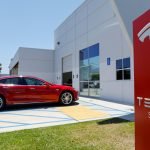City of the Future is a bi-weekly podcast from Sidewalk Labs that explores ideas and innovations that will transform cities.
In the third episode from season 2, hosts Eric Jaffe and Vanessa Quirk discuss the future of mobility in cities and share ideas that would make it way easier to get around without owning a car. In the podcast, author Horace Dediu talks about micro-mobility; TriMet’s Bibiana McHugh tells the story behind GTFS and the OpenTrip Planner; MaaS Global CEO Sampo Hietanen explains the concept of Mobility as a Service (MaaS); and Sidewalk Labs’ Corinna Li explains what Mobility on Demand could be like in the city of the future.
Micro-mobility, or in other terms, “anything that’s not a car”, is a bunch of transportation means that are becoming more and more popular nowadays, perfect for short trips. In fact, “in the U.S., the most common trips are about less than five miles”. These vehicles that require physical and digital infrastructures are being rapidly upgraded and improved.
Moreover, the hosts talk about the need for platforms that centralize the data, like GTFS, a format that represents schedule data for transit services, to help you move in a city. They discuss that Mobility as a service for the people, for the users, is a “promise of anywhere, any time”. Actually, in Finland, where all transportation service providers need to develop open interfaces, the application Whim, helps people use any modes they want, public or private, in any combination, and with one payment, ride them all, without jumping from one app to another.
[“source=archdaily”]







